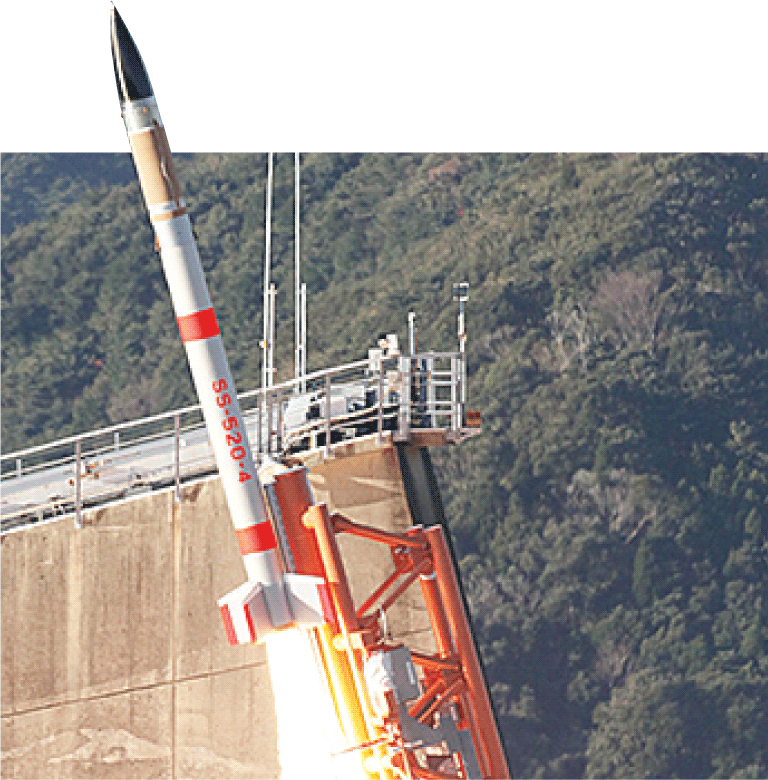
AN OUT-OF-THIS-WORLD NEWSPAPER
By Charles Apple The Spokesman-Review
Astronaut Anne McClain, who recently returned from six months on the International Space Station, subscribed to The Spokesman-Review’s daily e-edition during her time in orbit. We hope she enjoyed reading her hometown paper.

But this brings up an interesting question: If we had to, just how could we deliver a printed copy of The Spokesman-Review to McClain in orbit?

WHAT KIND OF ROCKET WOULD WE USE?
NASA has small launch vehicles — they call them “sounding rockets” — that fly into the edge of space. But they don’t go fast enough to make it into orbit.
You have to remember: Orbit isn’t a function of altitude. It’s a function of velocity.

To get into space and then stay there — in a state where you’re continually falling to Earth but moving so fast parallel to the ground that it basically curves away from you before you hit it — you have to be moving at about 17,000 miles per hour. We call this “escape velocity.”
In the early days of space exploration, the U.S. used a rocket called Vanguard that could lift 9 kilograms — that’s just a smidgen under 20 pounds — into orbit. But Vanguard was retired 60 years ago. They had a tendency to go boom.

The smallest available launch vehicle in the U.S. today would be Pegasus, which has been operational since 1990. It can throw up to 443 kg — that’s not quite half a ton — into orbit. That’s probably more than we’d need to deliver a daily newspaper. Unless it had a lot of advertising inserts that day.

HOW MUCH DOES AN AVERAGE NEWSPAPER WEIGH, ANYWAY?
You’d be surprised how hard this can be to nail down. It depends on how many pages are in that day’s paper, how many advertising inserts... porous newsprint is affected greatly by humidity, so even the moisture content of the air comes into play.

To make the math easier, let’s say that an average copy of The Spokesman-Review weighs a quarter of a pound. That would be 4 ounces, or 113.4 grams.
It might weigh a bit more on Sundays and Wednesdays. Or days in which somebody sneaks extra words into the Non-Sequitur comic strip.
WELL, THEN, IS THERE ANOTHER ROCKET WE COULD USE?
One option might be a Japanese booster rocket of the S-Series family — specifically, the SS-520 — which has been known to launch a 4 kg (just under 9 pounds) “cubesat” mini-satellite into low Earth orbit.

The catch? Only four SS-520s have ever been tested. Three made it to orbit. One fell harmlessly into the Pacific after a malfunction.
The Spokesman-Review circulation department is probably going to require a greater rate of success than that. We certainly won’t want to have to refund 20 percent of McClain’s subscription fee every week.
FROM WHERE WOULD WE LAUNCH THIS ROCKET?
That’s the other catch.

This means that once our plastic-bag-covered newspaper reaches orbit, it would require a series of complicated orbital maneuvers to place it into the correct orbit where it could be captured by the ISS.
This would a) require rocket engines and fuel and other things that would weigh a lot more than 9 lbs., and b) might take three or four days. By that time, most of that particular issue of The Spokesman-Review would be horribly out of date. Especially the weather and the lotto numbers.

Another problem: the SS-520 is currently launched only from Japan’s launch facility on Kyushu Island. So delivering the paper to the liftoff point in time every morning could be an issue.
So hitching a ride on the SS-520 doesn’t really seem like much of a solution after all.
HOW ABOUT SENDING THE PAPER UP WITH REGULAR CARGO TRIPS?
Currently, there are two private companies that send regular cargo shipments to the ISS: SpaceX and Northrop Grumman.

It costs about $43,180 to carry one pound of cargo to the ISS aboard Cygnus, according to Business Insider. So let’s rule that one out right away.

SpaceX founder Elon Musk has said he hopes to get the cost of carrying cargo to orbit aboard his Dragon spacecraft down to below $1,000 a pound. But that hasn’t happened yet. Right now, it costs about $27,000 per pound. The Dragon can carry up to 5,000 pounds — two and a half tons — to the ISS
This would a) require rocket engines and fuel and other things that would weigh a lot more than 9 lbs., and b) Might take three or four days. By that time, most of that particular issue of The Spokesman-Review would be horribly out of date. Especially the weather and the lotto numbers.
It can also bring cargo back home, too. This would help McClain if she wanted to recycle her newspapers. Which we’d encourage.
Given these figures, it would theoretically be possible to send a newspaper to McClain for about $6,750 per copy.
The catches:
- There are only three or four cargo missions to the ISS each year. So we wouldn’t be able to deliver daily.
- If we wanted to send her every issue, then that would be about 90 separate issues of the paper per launch. Which would weigh more than 22 lbs.
- That would push our cost up to $607,500. Per quarter. Or $2.43 million per year.
- McClain wouldn’t be able to make much of this money back by using coupons she finds in the paper. Not many places in orbit take coupons. Yet.
SO, WHAT’S THE ANSWER THEN?
The best solution for Anne McClain would be for her to buy a subscription to The Spokesman-Review’s digital report.

Which is what she did. And without having to do all the math you see here.
This is why she’s the rocket scientist and we are not.